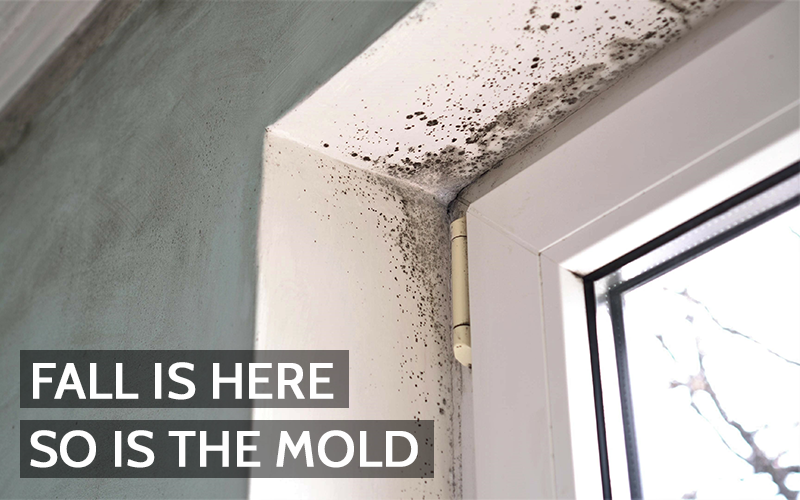As autumn arrives, homeowners often face the challenge of increased mold growth. The combination of falling temperatures, indoor heating, and seasonal rain creates the perfect environment for mold growth. Mold thrives in moist, warm conditions and needs organic material such as wood or drywall to grow. Fall weather increases the likelihood of moisture buildup due to rain, humidity, and condensation. Understanding that mold requires moisture, warmth, and organic material is the key to preventing it1.
Effective Strategies to Prevent Mold Growth
Preventing mold growth during the fall involves proactive measures to control moisture and maintain proper ventilation. Here are some recommendations from National Catastrophe Restoration Inc and NorHaz.
- Control Indoor Humidity: Maintaining low indoor humidity levels is one of the most effective ways to prevent mold growth. Aim to keep humidity below 50%. You can do this by using a dehumidifier, particularly in areas like basements and bathrooms. Running your exhaust fans in kitchens and bathrooms during cooking and bathing to vent moisture outside. Open windows periodically, even during cooler months, to increase air circulation and reduce moisture buildup.
- Seal Leaks and Improve Drainage: Inspect your home for any signs of leaks or water intrusion. Check roof and gutter systems for damage or blockages that could cause water to pool or seep into the house. Seal any cracks or gaps around windows and doors to prevent rainwater from getting inside. Ensure that your property has proper drainage systems in place to divert water away from the foundation and basement.
- Fix Plumbing Issues: Mold loves damp environments, so fixing any plumbing leaks is essential. Regularly inspect pipes and fixtures for leaks, particularly in areas prone to condensation, like bathrooms, kitchens, and laundry rooms. Address dripping faucets or slow leaks in walls immediately to avoid moisture buildup in hidden areas.
- Improve Ventilation: Proper ventilation is key to preventing moisture buildup. Keep air vents unobstructed to allow for airflow throughout the home. Install ventilation fans in attics, basements, and crawl spaces to reduce moisture accumulation. Use vented appliances, such as clothes dryers, to prevent excess moisture from being trapped indoors.
- Clean and Maintain Gutters: Clogged gutters can cause water to back up and seep into your home. Clean gutters and downspouts regularly to ensure they’re free of debris. Install gutter guards to prevent leaves and twigs from accumulating, especially during the fall.
- Address Damp Areas Promptly: If you notice water buildup or dampness in any part of your home, act quickly. Use a wet/dry vacuum or mop to remove standing water. Dry any wet materials such as carpets or upholstery within 24 to 48 hours to prevent mold from growing. Install a sump pump in basements or crawl spaces if flooding is a recurring problem.
- Rake and Dispose of Fallen Leaves: Remove fallen leaves from around your home’s exterior to minimize the risk of outdoor mold creeping inside. Keep your yard clean and well-maintained to reduce the chance of mold spores spreading indoors.
When to Seek Professional Assistance
While many mold prevention and remediation tasks can be handled by homeowners, certain situations warrant professional intervention. If mold covers an area larger than 10 square feet, is hidden behind walls or ceilings, or if you experience health issues such as persistent allergic reactions or respiratory problems, it’s advisable to consult a professional mold remediation service. Professionals have the expertise and equipment to safely and effectively remove mold and address underlying moisture issues, ensuring a healthy living environment3.
By understanding the factors that contribute to mold growth in the fall and implementing these preventive measures, you can maintain a healthy, mold-free home throughout the season.
Related Articles:
The Importance of Changing Your Car’s Cabin Air Filter
Consider subscribing to our news letter for weekly updates too!
References


